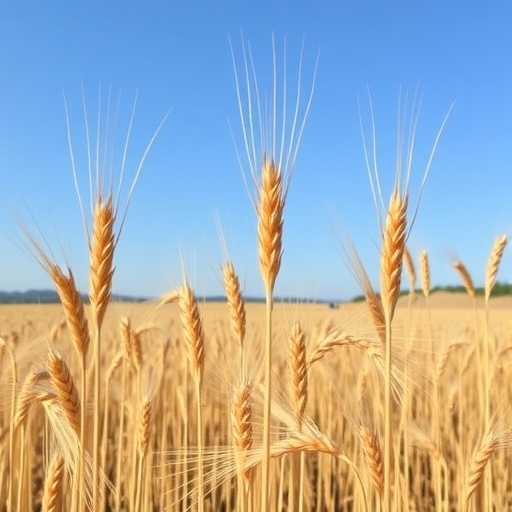In the vast agricultural landscape of Ethiopia, the significance of barley, specifically food barley (Hordeum vulgare L.), cannot be overstated. This cereal grain, a staple for many communities, is not only a source of sustenance but also a crucial element in the country’s agricultural economy. Recent research conducted by Tilahun, Gedebo, and Magule sheds light on the intricate world of barley breeding lines in Arsi, a region in Southeastern Ethiopia known for its agricultural potential.
The study meticulously dissects variance components, heritability, and selection intensity pertaining to these breeding lines. Understanding these concepts is invaluable for breeders keen on selecting the best traits for improved barley cultivars. By investigating these parameters, the research aims to enhance the genetic quality and yield potential of barley crops in the region.
Variance components are foundational in the genetic analysis of traits. They illuminate the degree to which observed phenotypic variations can be attributed to genetic factors versus environmental influences. In their study, the authors employed advanced statistical methodologies to quantify these components, ensuring the reliability of their findings. This aspect is particularly critical, as it allows breeders to make informed decisions based on the heritability estimates derived from the variances.
Heritability, a pivotal concept in plant breeding, refers to the proportion of observable traits that are due to inherited genetic factors. The researchers focused on high heritability traits in barley, which could lead to more predictable responses in selection. In barley, important traits like disease resistance, yield, and grain quality signify how heritable factors play a role in determining the success of breeding programs.
What sets this study apart is its emphasis on selection intensity, a crucial parameter in breeding that gauges the effectiveness of selection procedures. Selection intensity is a reflection of the proportion of individuals chosen for breeding out of a larger population. By analyzing how selection intensity impacts the genetic advancement of barley traits, the authors underline the significance of strategic breeding practices aimed at maximizing the desired traits in future generations.
Furthermore, the research recognizes the diverse agro-ecological conditions prevalent in Arsi, which significantly influence barley growth and development. By tailoring breeding strategies to fit the specific conditions of the region, the researchers aspire to cultivate barley varieties that are not only high-yielding but also resilient against local biotic and abiotic stresses.
One of the notable findings of the research is the identification of key breeding lines demonstrating remarkably high heritability for desirable traits. These lines are essential for developing new varieties that could thrive in the dynamic climate conditions faced by Ethiopian farmers. The implications of such breeding success extend beyond mere crop yield; they can improve food security for populations reliant on barley for their daily sustenance.
The grace of the scientific study is enhanced by the researchers’ innovative approaches, blending traditional breeding techniques with modern genomic selection methods. This fusion of old and new not only optimizes the breeding process but also accelerates the pace at which improved varieties can be developed and disseminated to farmers.
Another critical facet of this research is the collaboration fostered among local farmers, agricultural scientists, and institutions. By including local knowledge and priorities in the research process, the outcomes are not only scientifically robust but also culturally relevant. This participatory approach ensures that the resulting barley varieties align with the needs of the communities that will be growing and consuming them.
As farmers in Arsi embrace these newly developed barley lines, their impact on agricultural practices will resonate across the region. By harnessing improved varieties with higher yields and resilience traits, farmers can improve their livelihoods while contributing to the overall agricultural productivity of the country.
This research is timely and significant, as it aligns with global efforts to enhance food security in the face of climate change and rapid population growth. The insights gained from examining variance components, heritability, and selection intensity in barley not only serve local interests but also contribute to the broader discourse on sustainable agriculture.
Through the lens of this pioneering research, the future of barley cultivation in Ethiopia appears bright. Enhanced breeding programs backed by empirical data can set a benchmark for success in other cereal crops, promoting a holistic approach to agricultural development.
As the agricultural sector in Ethiopia continues to evolve, studies like these represent a beacon of hope for improved food security and sustainability. The collective efforts to dissect the complexities of plant genetics will pave the way for resilient and high-quality crops that can withstand environmental challenges.
In conclusion, the findings presented by Tilahun, Gedebo, and Magule not only advance scientific knowledge in the realm of barley breeding but also champion the cause of local farmers striving for a more prosperous future. Their commitment to excellence in agricultural research exemplifies the vital role that science plays in addressing the pressing challenges of food production in Ethiopia and beyond.
Subject of Research: Dissection of variance components, heritability, and selection intensity studies among food barley (Hordeum vulgare L.) breeding lines in Arsi, South-Eastern Ethiopia.
Article Title: Dissection of variance components, heritability, and selection intensity studies among food barley (Hordeum vulgare L.) breeding lines in Arsi, South-Eastern Ethiopia.
Article References:
Tilahun, G.W., Gedebo, A. & Magule, T. Dissection of variance components, heritability, and selection intensity studies among food barley (Hordeum vulgare L.) breeding lines in Arsi, South-Eastern Ethiopia.
Discov Agric 3, 121 (2025). https://doi.org/10.1007/s44279-025-00295-4
Image Credits: AI Generated
DOI: 10.1007/s44279-025-00295-4
Keywords: barley, heritability, variance components, selection intensity, food security, agricultural research, Ethiopia.




